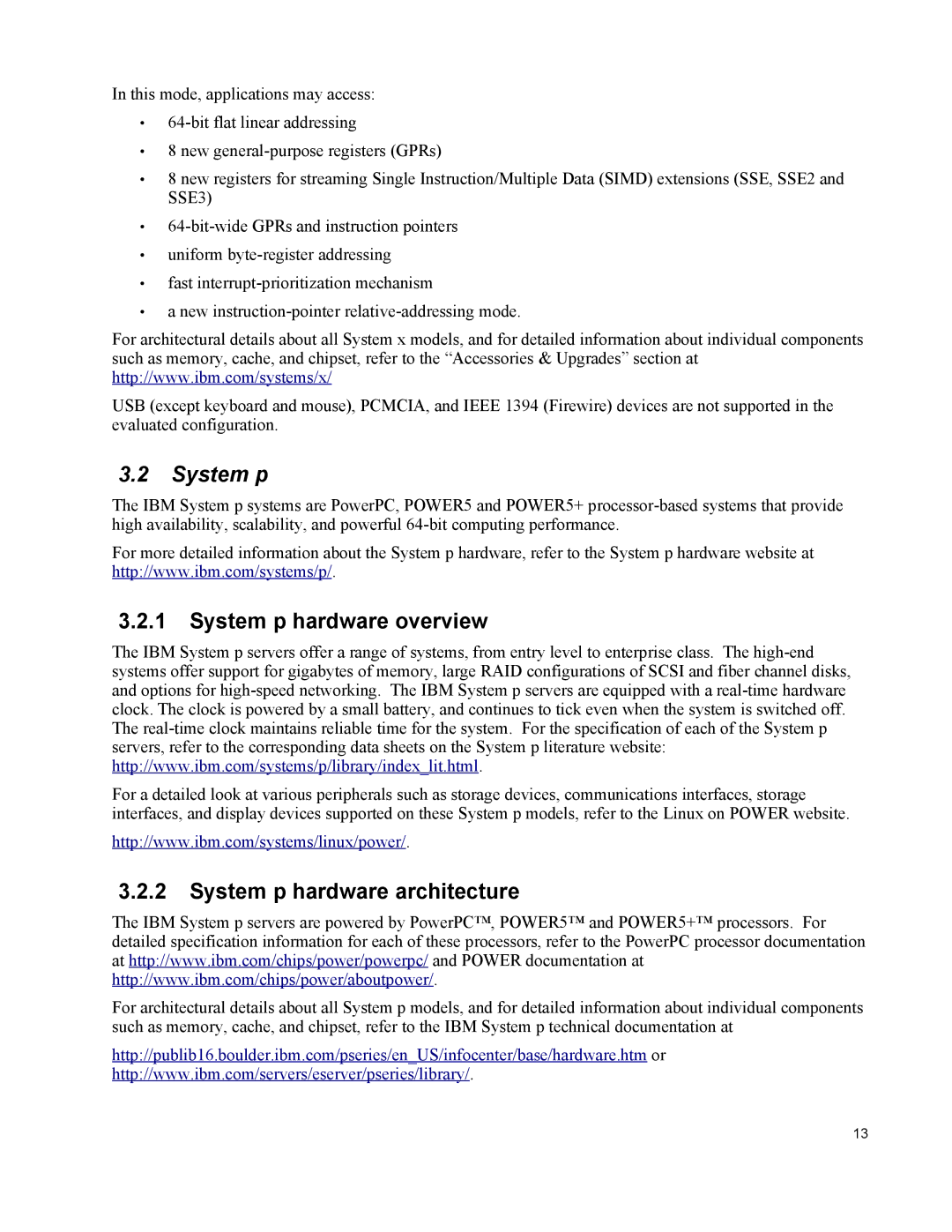In this mode, applications may access:
•
•8 new
•8 new registers for streaming Single Instruction/Multiple Data (SIMD) extensions (SSE, SSE2 and SSE3)
•
•uniform
•fast
•a new
For architectural details about all System x models, and for detailed information about individual components such as memory, cache, and chipset, refer to the “Accessories & Upgrades” section at http://www.ibm.com/systems/x/
USB (except keyboard and mouse), PCMCIA, and IEEE 1394 (Firewire) devices are not supported in the evaluated configuration.
3.2System p
The IBM System p systems are PowerPC, POWER5 and POWER5+
For more detailed information about the System p hardware, refer to the System p hardware website at http://www.ibm.com/systems/p/.
3.2.1System p hardware overview
The IBM System p servers offer a range of systems, from entry level to enterprise class. The
For a detailed look at various peripherals such as storage devices, communications interfaces, storage interfaces, and display devices supported on these System p models, refer to the Linux on POWER website.
http://www.ibm.com/systems/linux/power/.
3.2.2System p hardware architecture
The IBM System p servers are powered by PowerPC™, POWER5™ and POWER5+™ processors. For detailed specification information for each of these processors, refer to the PowerPC processor documentation at http://www.ibm.com/chips/power/powerpc/ and POWER documentation at http://www.ibm.com/chips/power/aboutpower/.
For architectural details about all System p models, and for detailed information about individual components such as memory, cache, and chipset, refer to the IBM System p technical documentation at
http://publib16.boulder.ibm.com/pseries/en_US/infocenter/base/hardware.htm or
http://www.ibm.com/servers/eserver/pseries/library/.
13
